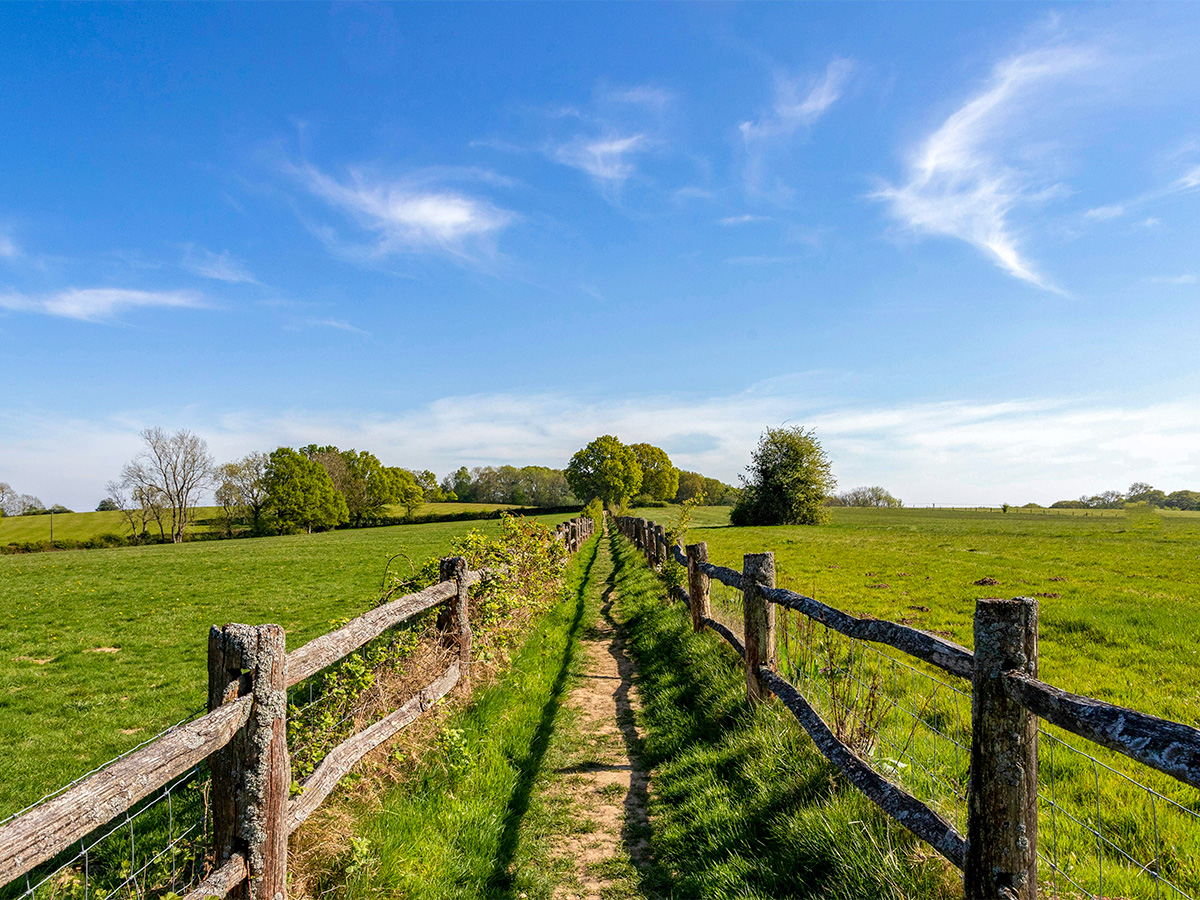There’s a region in England known as the Cotswolds. It stretches across gentle hills and honey-colored stone villages and is situated about 75 miles from central London. Much of it is easily accessible by train, making it a popular escape from the bustle of the city. The Cotswolds is celebrated for its rolling landscapes, charming towns, lush (notoriously English) gardens, and deep history. So enchanting is the locale that it’s been officially designated an Area of Outstanding Natural Beauty. With its storybook scenery and timeless character, it’s no wonder that countless authors, poets, filmmakers, and other creative souls have chosen to call it home over the centuries.
Please allow me to offer a very brief tour, to simply initiate you with the area I’m discussing – just in case you’re not familiar with it.
This is what a tiny little piece of the Cotswolds looks like. I’m sure you’ve seen pictures of scenes like this before.
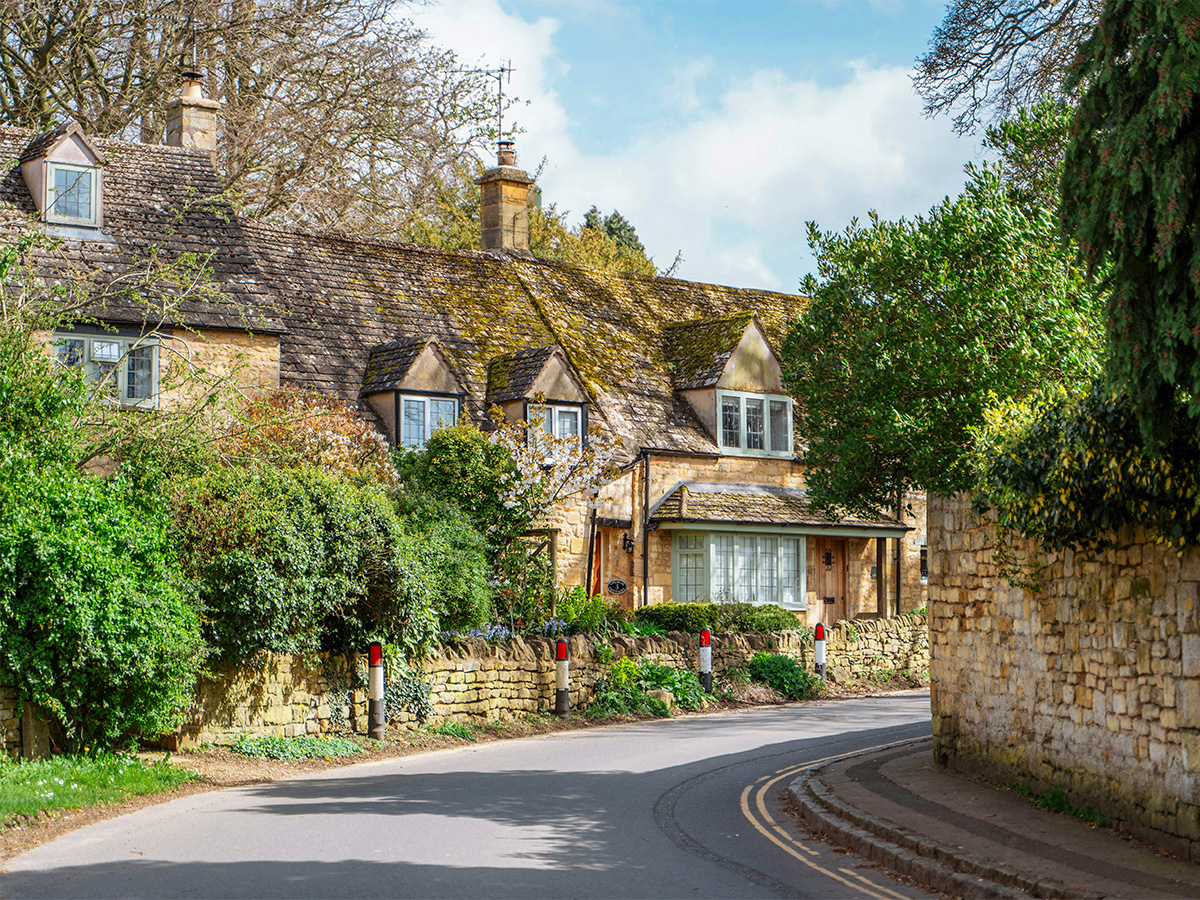
This is a photo of the Manor House Hotel, a 17th century country house, in Castle Combe, a village that’s frequently described as the prettiest in England.
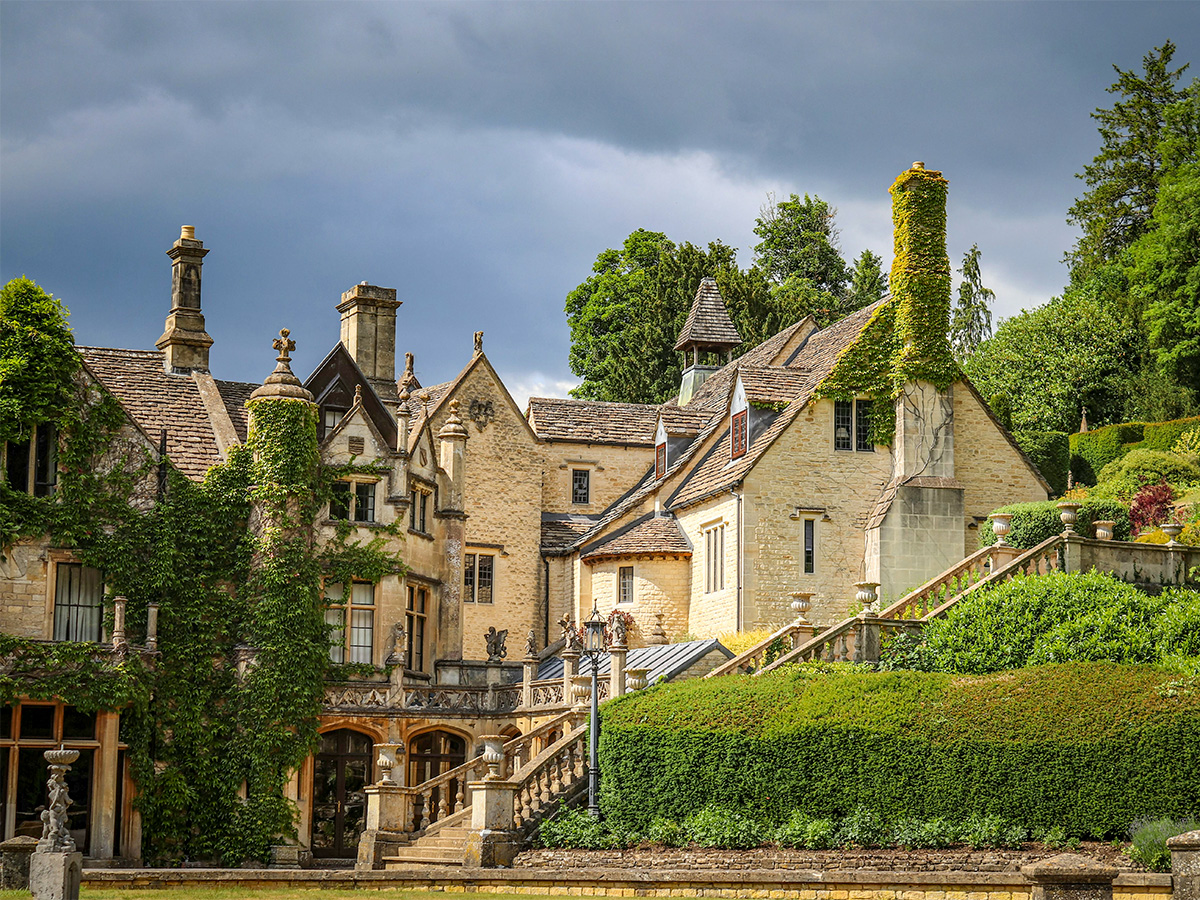
In the same Castle Combe is the infinitely famous and probably most photographed bridge in all of the UK.
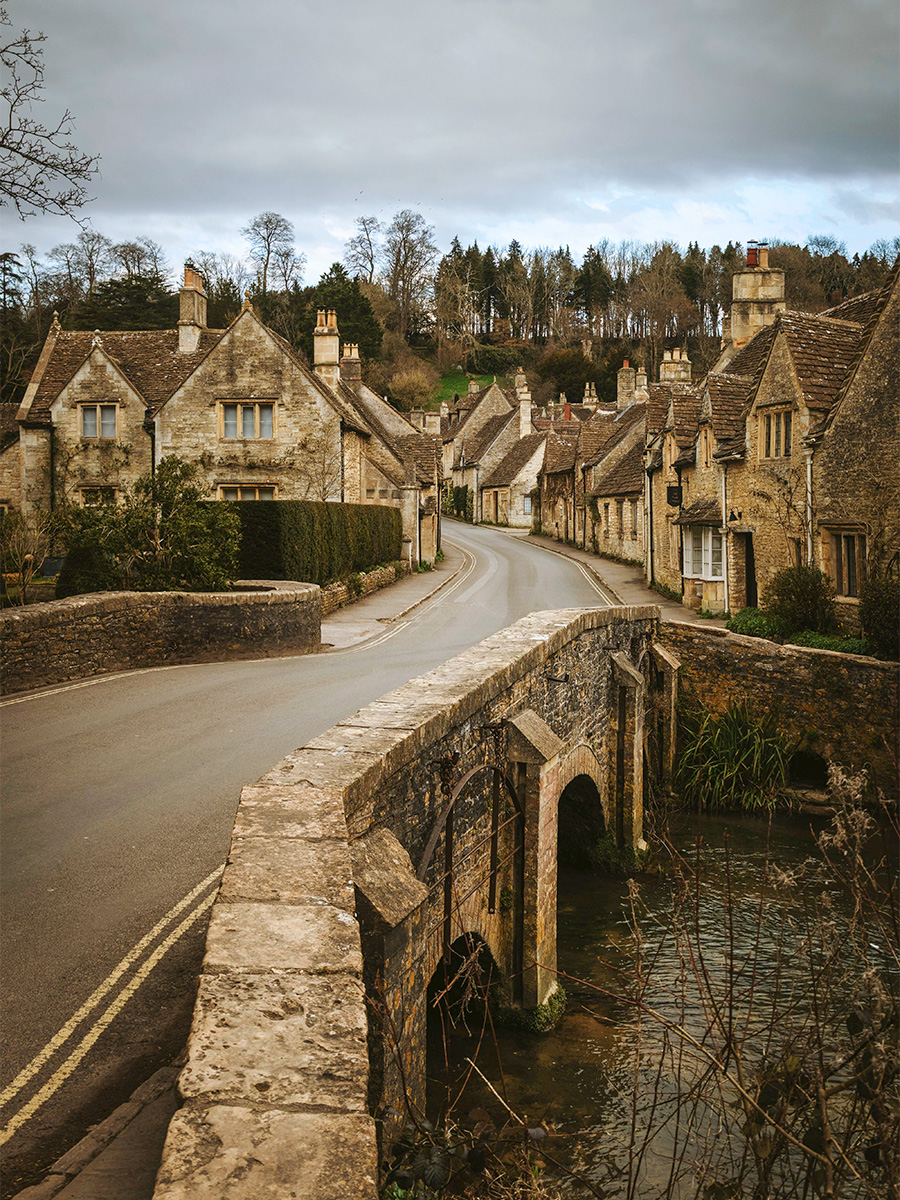
Just beyond the stone wall and open field is St. Cyriac’s Church. It’s a 14th Century structure that’s located right in the heart of Lacock Village.
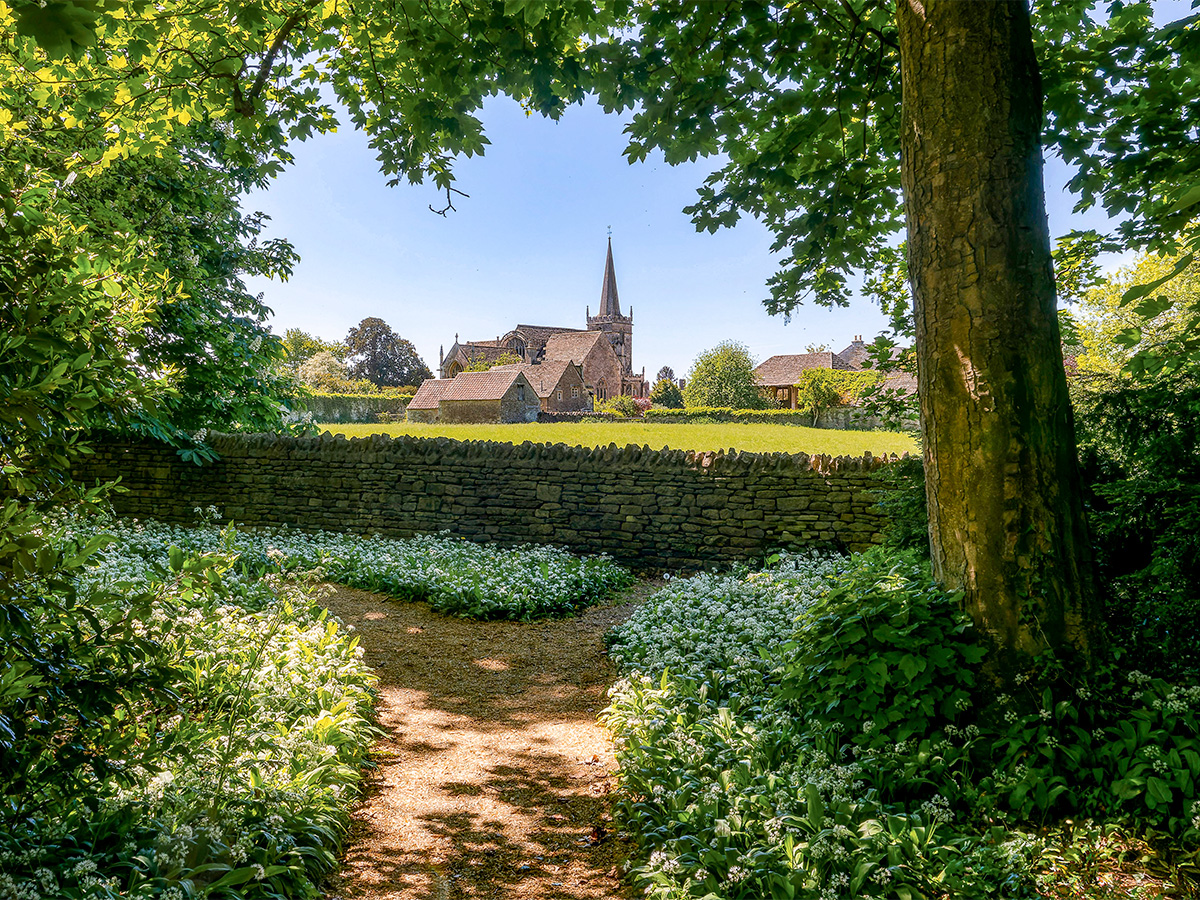
The Cotswolds is home to some of England’s most quintessential and captivating villages; Broadway, Bourton-on-the-Water, Bibury, Stow-on-the-Wold, and Chipping Campden, to name just a few.
As wonderful as it is, the Cotswolds isn’t the sort of place most young people would rush to visit. There aren’t nightclubs or theme parks to keep a teenager entertained. What folks find instead are cozy pubs, abundant charm and nostalgia, and even a racecar track or two. To be honest, even if I had known about the Cotswolds when I was younger, I doubt I would have cared. It wasn’t until I matured and calmed my appetite for a more elevated type of adventure that I began to feel its pull. Today’s version of me appreciates architecture, landscapes, and the craftsmanship of old construction. I enjoy hiking, walking, photographing, and writing – activities I would have brushed aside entirely during my teens and twenties and activities the Cotswolds encourages today.
What Makes the Cotswolds Different?
Money. Luck. And a lot of wool. The Cotswolds initially built its wealth through the wool trade. Between the late 13th and 15th centuries, merchants traded what was known as Lion’s wool, a strong, smooth, lustrous, golden fiber that was introduced by the Romans. It was farmed locally in abundance and became so prized that the Cotswolds emerged as the center of England’s wool industry. With the profits, magnificent wool churches (English churches financed primarily by donations from rich merchants and farmers who had benefitted from the medieval wool trade) were built, and towns and villages flourished. Over the centuries, the region has seen its share of ups and downs, but three things have remained constant: the characteristic honey-colored limestone, the rolling green hills, and the captivating architecture.
Today, the Cotswolds is a playground for the rich, dotted with sprawling country estates. Its present wealth is primarily derived from tourism, high-end real estate, and taxes paid by its well-to-do residents. Close enough to London for convenience, yet far enough to enjoy quiet horseback rides through the countryside, the Cotswolds offers nearly everything one could desire in refined country living.
Walking the Cotswolds
Through the years, Laura and I have visited more small towns than I can count, and our routine has become almost formulaic: arrive by car, wander the streets, snap a few pictures, grab some lunch, and then head out. I imagine most couples who share this pastime go about it in much the same way. Don’t get me wrong – I do enjoy our excursions, otherwise I wouldn’t suggest them. But I’ll admit, they can feel a bit repetitive. After all, how many towns can one realistically drive to, explore, and then leave behind in a lifetime? Lately, I’ve been itching for a different approach.
I sometimes wonder if I have it in me to walk 102 miles. A few years back, I managed seven, and survived. And that was with nothing more than a pair of worn-out sneakers whose soles had all but vanished. With the right footwear, I imagine ten miles a day wouldn’t be too much of a stretch. Laura, of course, finds my hesitation amusing. Whenever I balk at the idea of long-distance walking, she tilts her head, fixes me with her unmistakable German stare, and silently mocks me. She would never admit to this, of course, but I know when I’m being mocked. Living with Laura’s brand of intensity is an adventure all its own.
Imagine, instead of driving into a village as I described earlier, walking into one. Picture the feeling of leaving a dirt path that cuts through fields or forest and stepping onto pavement, where you can meander down the main street of a charming Cotswolds village. Now imagine doing that ten times over ten days, each night spent in a cozy inn or bed-and-breakfast. I’ve imagined it and it’s firmly on my list of things to do. Or perhaps achieve. I’m not entirely sure if walking the Cotswolds Way is something one simply does or something one truly achieves. After all, 102 miles is no Appalachian Trail with its 2,198 miles, but it is a distance worth respecting, and one most people would likely never attempt.
The Cotswolds Way is a 102-mile trek that begins in Chipping Campden and ends in Bath. Along the way, the path winds through Broadway, Stanton, Cleeve Hill, Birdlip, Painswick, King’s Stanley, Wotton-under-Edge, Tormarton, and several other villages in between. But it doesn’t just pass through towns – it also crosses country lanes, forests, hilltops, and open fields. It’s the sort of journey a person can take at nearly any age with a bit of effort and determination. Take Robin Shuckburgh, for instance. He runs the Cotswolds Explorer YouTube channel and recently completed the Cotswolds Way at the age of 77. Knowing that, I feel much more confident of my own chances.
Walking the Cotswold Way – Episode 1 | Chipping Campden to Broadway, Stanton & Stanway
What attracts me most to an adventure like walking the Cotswolds Way is the quality of the experience. I’ve done plenty of hiking through forests, but I’ve never walked through a landscape where natural beauty is paired with what people have built. Woods are woods – no one designed them. But the English countryside, with its carefully tended fields, seemingly endless stone walls, and timeless villages, was shaped by human hands. And those who created it had an eye for aesthetics, something I’ve always been especially drawn to. It’s a simple concept, really – I enjoy looking at quality and it’s my suspicion that various elements of this particular path are of the type of quality I enjoy the most.
So there it is. Another one of my plans, or dreams, or whatever I should call it. I’m a very spur-of-the-moment type of person, so it’s not unlikely that you’ll one day see photos taken in a faraway place posted on this very website.
This brings me to the end of another post. I sincerely hope you enjoyed it and, if so, I invite you to leave a comment below to let me know your thoughts. It’s always nice to get feedback on the things I share.
Below are a few questions I’d like to ask you:
- Would you like to receive my newsletter? It contains summaries of my posts so you can click and read whichever ones you’re most interested in. If so, you can learn more here. I generally send my newsletter once per week.
- Are you new here? Are you interested in reading through my entire list of posts that go way back? If so, you can start right here.
If you did any of these things, I can tell you right now that you’d truly make my day. Thank you so much and with that, I say adieu. Or at least, until next time.
PS – Can you do me a huge favor? Can you please share this post with someone you think might enjoy it? Here are some links to make doing that easier. Thank you!
